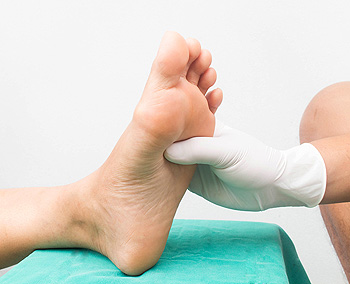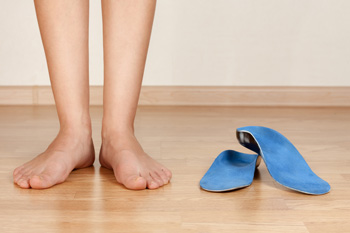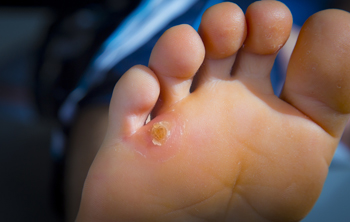Items filtered by date: November 2020
What Is the Ideal Shoe Like?
Finding the right shoes is a very important task, but sometimes it can be challenging. What should you look for when shopping for shoes? What should you avoid? We can come closer to answering these questions by describing the features that an ideal shoe should have, and why these features are important. An ideal shoe should fit snugly. You may want to look for shoes that have laces, velcro fasteners, or buckles, as well as a snug, stiff back to keep your feet from sliding when you walk. The shoe should be the correct size. Look for a shoe that leaves you with about a half inch of space between your longest toe and the end of the shoe. The inside of the shoe should be supportive and free of irritants. Look for an arch shape that supports your foot and a smooth lining without any rough seams. What about high heels? While they may look nice, excessively high heels can hurt your feet. When shopping for shoes, select heels that are no taller than 1.5 inches. For more information on finding the right shoes for you, consult with a podiatrist.
It is important to find shoes that fit you properly in order to avoid a variety of different foot problems. For more information about treatment, contact Dr. Mark Gagnon from Advanced Podiatry. Our doctor will treat your foot and ankle needs.
Proper Shoe Fitting
Shoes have many different functions. They cushion our body weight, protect our feet, and allow us to safely play sports. You should always make sure that the shoes you wear fit you properly in order to avoid injuries and deformities such as: bunions, corns, calluses, hammertoes, plantar fasciitis, stress fractures, and more. It is important to note that although a certain pair of shoes might be a great fit for someone else, that doesn’t mean they will be a great fit for you. This is why you should always try on shoes before buying them to make sure they are worth the investment. Typically, shoes need to be replaced ever six months to one year of regular use.
Tips for Proper Shoe Fitting
- Select a shoe that is shaped like your foot
- Don’t buy shoes that fit too tight, expecting them to stretch to fit
- Make sure there is enough space (3/8” to ½”) for your longest toe at the end of each shoe when you are standing up
- Walk in the shoes to make sure they fit and feel right
- Don’t select shoes by the size marked inside the shoe, but by how the shoe fits your foot
The shoes you buy should always feel as good as they look. Shoes that fit properly will last longer, feel better, and improve your way of life each day.
If you have any questions, please feel free to contact one of our offices located in Crestwood, Orland Park, and Summit, IL . We offer the newest diagnostic and treatment technologies for all your foot care needs.
Managing Pain From Peripheral Neuropathy
 Peripheral neuropathy is a condition that causes a reduction or loss of sensation in the lower limbs. Common symptoms of peripheral neuropathy include pain, a pins-and-needles sensation in the lower limbs, numbness, and weakness. Chronic stress can potentially worsen the symptoms of peripheral neuropathy. When experiencing stress, it is important to continue to maintain healthy eating habits and positive social relationships with friends, family, and caregivers to reduce the risk of exacerbating peripheral neuropathy pain. To learn more about how to manage peripheral neuropathy, please speak with a podiatrist.
Peripheral neuropathy is a condition that causes a reduction or loss of sensation in the lower limbs. Common symptoms of peripheral neuropathy include pain, a pins-and-needles sensation in the lower limbs, numbness, and weakness. Chronic stress can potentially worsen the symptoms of peripheral neuropathy. When experiencing stress, it is important to continue to maintain healthy eating habits and positive social relationships with friends, family, and caregivers to reduce the risk of exacerbating peripheral neuropathy pain. To learn more about how to manage peripheral neuropathy, please speak with a podiatrist.
Neuropathy
Neuropathy can be a potentially serious condition, especially if it is left undiagnosed. If you have any concerns that you may be experiencing nerve loss in your feet, consult with Dr. Mark Gagnon from Advanced Podiatry. Our doctor will assess your condition and provide you with quality foot and ankle treatment for neuropathy.
What Is Neuropathy?
Neuropathy is a condition that leads to damage to the nerves in the body. Peripheral neuropathy, or neuropathy that affects your peripheral nervous system, usually occurs in the feet. Neuropathy can be triggered by a number of different causes. Such causes include diabetes, infections, cancers, disorders, and toxic substances.
Symptoms of Neuropathy Include:
- Numbness
- Sensation loss
- Prickling and tingling sensations
- Throbbing, freezing, burning pains
- Muscle weakness
Those with diabetes are at serious risk due to being unable to feel an ulcer on their feet. Diabetics usually also suffer from poor blood circulation. This can lead to the wound not healing, infections occurring, and the limb may have to be amputated.
Treatment
To treat neuropathy in the foot, podiatrists will first diagnose the cause of the neuropathy. Figuring out the underlying cause of the neuropathy will allow the podiatrist to prescribe the best treatment, whether it be caused by diabetes, toxic substance exposure, infection, etc. If the nerve has not died, then it’s possible that sensation may be able to return to the foot.
Pain medication may be issued for pain. Electrical nerve stimulation can be used to stimulate nerves. If the neuropathy is caused from pressure on the nerves, then surgery may be necessary.
If you have any questions, please feel free to contact one of our offices located in Crestwood, Orland Park, and Summit, IL . We offer the newest diagnostic and treatment technologies for all your foot care needs.
What Are the Sesamoids?
Sesamoids are bones that are connected only to tendons or are embedded in muscle. Each of your feet contains two very small sesamoid bones that are roughly the size of a corn kernel. They are found on the underside of the front of the foot, near the big toe. When the tendons around these bones become injured or inflamed, a condition called sesamoiditis develops. Sesamoiditis is common among certain athletes, such as ballet dancers, runners, and baseball players. Symptoms of sesamoiditis include pain under the big toe or under the ball of the foot, swelling, bruising, and difficulty bending and straightening the toe. If you have these symptoms, it is suggested that you see a podiatrist for a proper diagnosis and treatment.
Sesamoiditis is an unpleasant foot condition characterized by pain in the balls of the feet. If you think you’re struggling with sesamoiditis, contact Dr. Mark Gagnon of Advanced Podiatry. Our doctor will treat your condition thoroughly and effectively.
Sesamoiditis
Sesamoiditis is a condition of the foot that affects the ball of the foot. It is more common in younger people than it is in older people. It can also occur with people who have begun a new exercise program, since their bodies are adjusting to the new physical regimen. Pain may also be caused by the inflammation of tendons surrounding the bones. It is important to seek treatment in its early stages because if you ignore the pain, this condition can lead to more serious problems such as severe irritation and bone fractures.
Causes of Sesamoiditis
- Sudden increase in activity
- Increase in physically strenuous movement without a proper warm up or build up
- Foot structure: those who have smaller, bonier feet or those with a high arch may be more susceptible
Treatment for sesamoiditis is non-invasive and simple. Doctors may recommend a strict rest period where the patient forgoes most physical activity. This will help give the patient time to heal their feet through limited activity. For serious cases, it is best to speak with your doctor to determine a treatment option that will help your specific needs.
If you have any questions please feel free to contact one of our offices located in Crestwood, Orland Park, and Summit, IL . We offer the newest diagnostic and treatment technologies for all your foot and ankle needs.
Overpronation and Orthotics
If your feet are overpronated, this means that they roll excessively inward when you walk. This can be a problem, as overpronation is associated with the development of various foot conditions, including flat feet, plantar fasciitis, shin splints, and Achilles tendonitis. These conditions can all cause foot and ankle pain, which can cause mild discomfort, or be severe enough to interfere with your daily activities. Wearing an orthotic device in your shoes can help alleviate foot pain associated with overpronation. Orthotics can provide the cushioning, stability and support that your feet need. For more information about orthotics for overpronation, consult with a podiatrist today.
If you are having discomfort in your feet and would like to try orthotics, contact Dr. Mark Gagnon from Advanced Podiatry. Our doctor can provide the care you need to keep you pain-free and on your feet.
What Are Orthotics?
Orthotics are inserts you can place into your shoes to help with a variety of foot problems such as flat feet or foot pain. Orthotics provide relief and comfort for minor foot and heel pain but can’t correct serious biomechanical problems in your feet.
Over-the-Counter Inserts
Orthotics come in a wide variety of over-the-counter inserts that are used to treat foot pain, heel pain, and minor problems. For example, arch supports can be inserted into your shoes to help correct overarched or flat feet, while gel insoles are often used because they provide comfort and relief from foot and heel pain by alleviating pressure.
Prescription Orthotics
If over-the-counter inserts don’t work for you or if you have a more severe foot concern, it is possible to have your podiatrist prescribe custom orthotics. These high-quality inserts are designed to treat problems such as abnormal motion, plantar fasciitis, and severe forms of heel pain. They can even be used to help patients suffering from diabetes by treating foot ulcers and painful calluses and are usually molded to your feet individually, which allows them to provide full support and comfort.
If you are experiencing minor to severe foot or heel pain, it’s recommended to speak with your podiatrist about the possibilities of using orthotics. A podiatrist can determine which type of orthotic is right for you and allow you to take the first steps towards being pain-free.
If you have any questions please contact one of our offices located in Crestwood, Orland Park, and Summit, IL . We offer the newest diagnostic and treatment technologies for all your foot and ankle needs.
Treatments for Corns
Corns are small calluses that usually develop on the top of the toes due to friction, usually from the shoes or other toes rubbing against the skin. Though they are small, corns can be painful. Treatment for corns focuses on reducing your pain and discomfort, as well as addressing the underlying cause for the corn’s development. A podiatrist may recommend that you apply a pad around the corn area to keep pressure off of it. Wearing larger, more comfortable shoes with a wider toe box may also help. If more conservative treatment measures fail, surgery may be an option. If you suffer from corns, it is suggested that you see a podiatrist for treatment.
Corns can make walking very painful and should be treated immediately. If you have questions regarding your feet and ankles, contact Dr. Mark Gagnon of Advanced Podiatry. Our doctor will treat your foot and ankle needs.
Corns: What Are They? And How Do You Get Rid of Them?
Corns are thickened areas on the skin that can become painful. They are caused by excessive pressure and friction on the skin. Corns press into the deeper layers of the skin and are usually round in shape.
Ways to Prevent Corns
There are many ways to get rid of painful corns such as:
- Wearing properly fitting shoes that have been measured by a professional
- Wearing shoes that are not sharply pointed or have high heels
- Wearing only shoes that offer support
Treating Corns
Although most corns slowly disappear when the friction or pressure stops, this isn’t always the case. Consult with your podiatrist to determine the best treatment option for your case of corns.
If you have any questions please feel free to contact one of our offices located in Crestwood, Orland Park, and Summit, IL . We offer the newest diagnostic and treatment technologies for all your foot and ankle needs.





